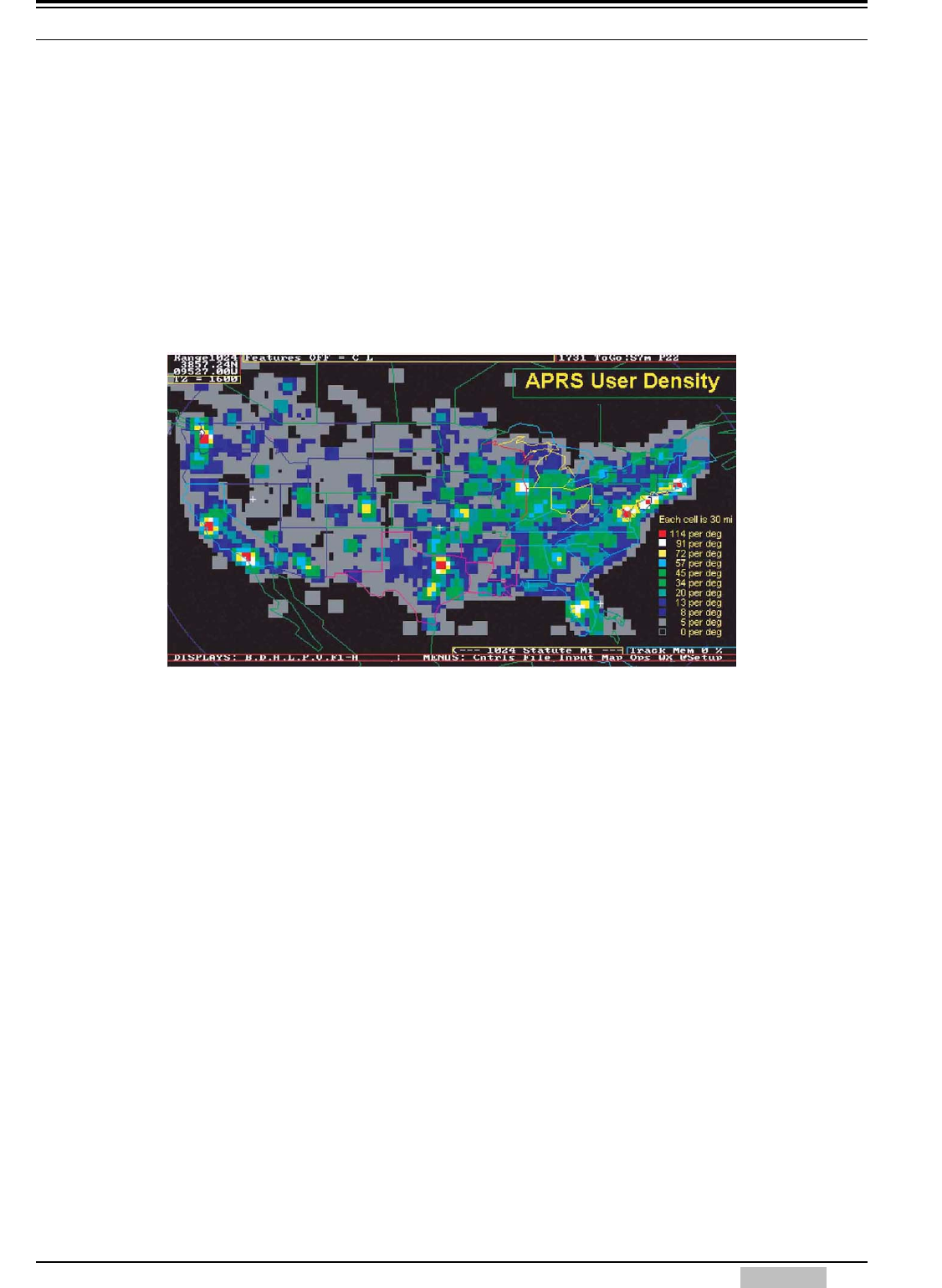
2 APRS OPERATIONS written by Bob Bruninga, WB4APR
TM-D710A/E CONTENTS 5
2.2 Ubiquitous Operations
Consistent with providing information on all resources within range, APRS must also work across
all boundaries and in all areas of the continent for all travelers. For this reason, 144.39 MHz is
dedicated to APRS throughout North America. Other continents have similar single frequencies
such as 144.80 MHz in Europe and 145.175 MHz in Australia. Also, after 14 years of evolution,
APRS was greatly simplified beginning in the 2004 time frame to eliminate obsolete and inefficient
routing. See the New-N Paradigm.
Now, there is only one recommended PATH everywhere, and it is VIA WIDEn-N for fixed stations
where N is usually 2 in most metropolitan areas and no more than 3 in very remote or isolated
areas far from cities. Mobiles can use a path VIA WIDE1-1,WIDE2-1 in those 2-hop areas to gain
help from nearby WIDE1-1 fill-in digipeaters. See the high density areas in the map below:
This data from Steve Dimse’s FINDU is plotted on APRSdos to show the user density in the
USA in February 05. Although it appears that most of the USA is low density, remember that a
WIDE5-5 launched anywhere in the remotest area will still get to the cities and add to the
QRM there. And there are 100 times more low density users surrounding these cities on all
sides that really adds up to heavy QRM. We recommend WIDE2-2 in the 8 per degree or
more and surrounding areas. 3-3 should be used only in the 5 per degree or less areas.
The grid size is 30 miles and each is averaged with all 8 of its surrounding adjacent grids. The
file is over 11,000 stations.
But the great news is that the New n-N Paradigm is the right approach. It encourages
WIDEn-N everywhere while letting the high density areas trap large values of N to prevent
overload in their areas only.
Figure 2-2 APRS User Density
2.3 APRS Global Internet System
Although APRS is a local, tactical real-time two-way communications system, the enormous free
bandwidth of the Internet was added in the mid 1990s to allow global monitoring of all real-time data
from all local communities around the world. Everything on any APRS frequency is being monitored
locally and fed globally into the APRS internet system by hundreds of IGates. See live list
(complete) or a Map of I-G symbols.
Not only does this allow for global monitoring of any local activity, it also allows two-way point-to-
point messaging between any two APRS users anywhere on the planet (that has an APRS
infrastructure). Think of it as everything goes in, so it is available to everyone, but the only things
that come from the Internet back to local RF are messages and selected position data requested
locally.


















